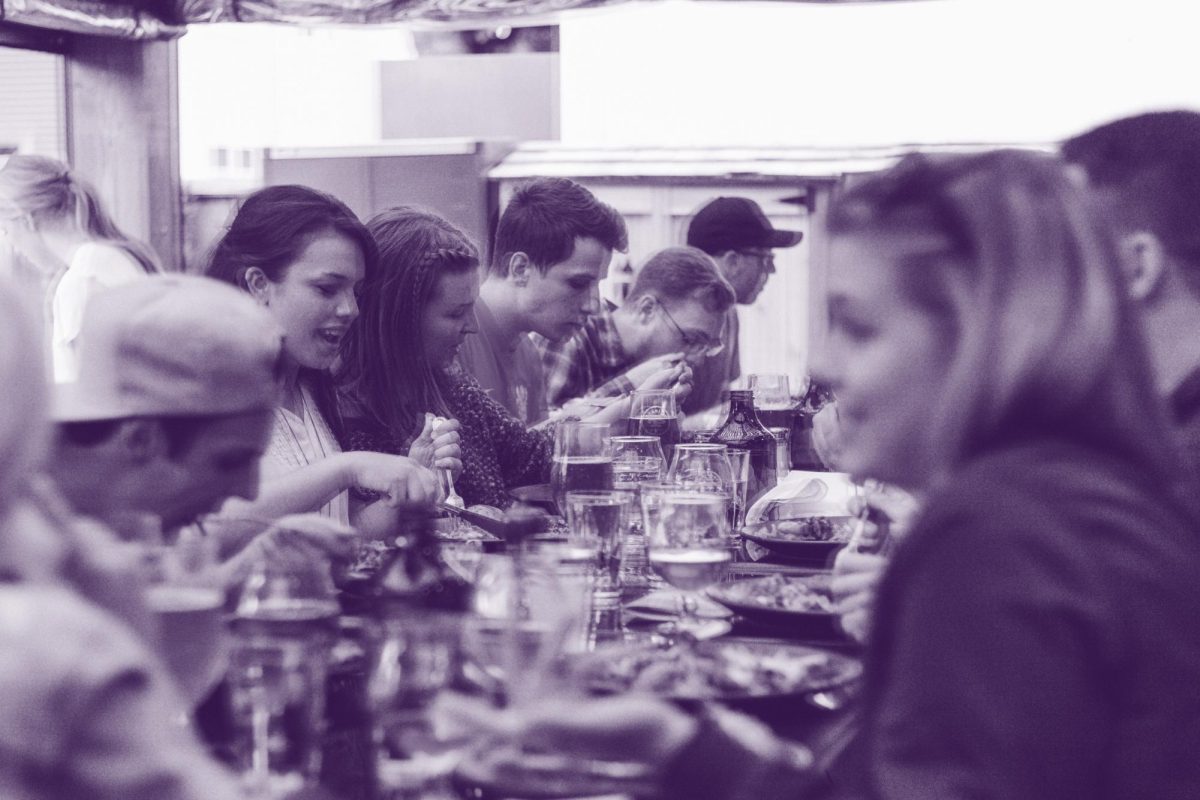Third places are places other than work or home where people gather and interact. They can be coffee shops, libraries, parks, bars or shopping centers, to name a few.
Across the country, these places are in decline. This has devastating effects, especially amidst our ongoing loneliness epidemic. According to the Survey Center on American Life, 44% of Americans report they do not have a spot in their local communities they go to regularly.
However, in Salt Lake City, third places are alive and well. We must support our community’s essential third places.
Otherwise, our city could fall into the nationwide trend of these spaces disappearing.
Necessary Spaces
Third places are crucial for community and personal happiness. They provide a space for connection with diverse kinds of people, which can be difficult to find in highly specialized places.
They are also essential to create the feeling of a neighborhood. When Americans have a third place nearby that they visit regularly, 58% say they feel close to their neighbors.
Without nearby third places, that number drops by 13 points.
Third places are equalizers. They put everyone into a neutral space, free of the competitive atmosphere of the workplace. They are also foundational to democracy, as they allow the exchange of ideas and grassroots organization.
As our local haunts disappear, loneliness becomes more than pervasive. It becomes a killer.
Socially disconnected people have a 29% increased risk of heart disease, 50% increased risk of dementia and 32% increased risk of stroke.
Loneliness can have as detrimental an impact on lifespan as smoking 15 cigarettes a day.
With social disconnection as the norm, our local places of gathering are more important than ever.
Ray Oldenburg, the sociologist who coined the term “third place,” said: “Life without community has produced, for many, a life style consisting mainly of a home-to-work-and-back-again shuttle. Social well-being and psychological health depend upon community. It is no coincidence that the ‘helping professions’ became a major industry in the United States as suburban planning helped destroy local public life and the community support it once lent.”
The Decline
Political scientist Robert Putnam said, “There has been a steady decline for decades, with dropping club memberships, church attendance and other forms of social participation.”
Now, this effect is worsened by access to current technologies. Social media replaces face-to-face interaction. Online shopping alleviates the need to go out. Since 2011 and 2012, establishments for the arts, eateries, libraries and retail establishments have declined in number throughout America.
The shift to online-only commerce is profitable but comes at the expense of our sense of society. The cost of living has also contributed to the death of first places.
With its expeditious rise, many Americans are frustrated with the fact one must buy something to go seemingly anywhere.
And suburbia keeps people isolated. Most are not within walking distance of local amenities. Car dependence further encourages people to be isolated almost all of the time.
A focus on maximizing profit erodes the ability of third places to function properly.
With restaurants hellbent on turning tables, socialization is actively discouraged. Coffeehouses that would be community hubs are driven out by chains and franchises. The dollar is taking precedence over human happiness.
Salt Lake Is Different
Moving here from Las Vegas, I immediately noticed something was different.
For the first time in my life, I could go out and feel community stirring, rather than a mass of disconnected strangers drifting about. This is aided by Salt Lake’s 735 acres of public parks. These public spaces are havens for lingering, which is so often discouraged in businesses today.
Salt Lake is also teeming with coffee shops, some of the only businesses designed around patrons staying for hours at a time.
Salt Lake Coffee Break, for instance, is a widely regarded student spot. It is also a frequent meeting location for grassroots organizations, such as Salt Lake DSA. Coffee Break is open until 2 a.m., making it a dependable late night study or hangout option. The walls are lined with posters for community events, bands seeking new members and ads for book clubs or DND groups.
Salt Lake is also held together by its lively outdoor community. When talking to peers, one of the primary suggestions for meeting new people is rock climbing gyms, like Momentum or Bouldering Project.
The University of Utah continues SLC’s trend of investing in its third place. With the Student Union, Lassonde, the Kahlert Courtyard, on-campus coffee shops, the library and the dining hall, college creates an environment wherein one is likely to run into acquaintances and friends and is not being shoved out by business interests.
Additionally, campus is walkable, another fundamental aspect of community well-being. In a walkable campus and walkable city, we’re likely to cross paths with friends. It’s this community model that leads to healthy, well-connected individuals.
Everyone is lonely, especially in our generation. It is important to know where that comes from. We have too much to offer to be stuck in the home-work-back again shuttle.
We have too much to offer as people to be spending seven hours a day looking at our phones. Salt Lake offers something beautiful. Go to your nearest park, coffee shop, rock-climbing gym or student hub. Without community attendance and support, these places go away.




